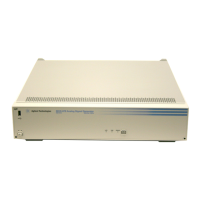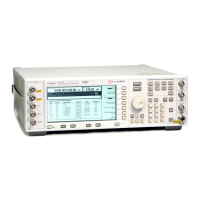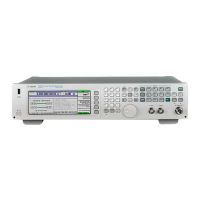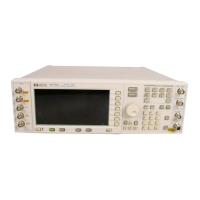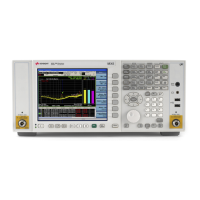ILT.2620
The problem can be caused by the A10 assembly (ALC),
the A8 assembly (mod/gen), or by a microcircuit. Using
the table below, go to the indicated paragraphs.
Failing Frequency
Range or Failure Mode
Go to
Paragraph
2 GHz only A10.9000 (ALC) or RF.2490 (low band)
2 GHz only A10.9000 (ALC) or RF.3890 (dual
modulator or AM modulator in Opt. 006)
Above
and
below 2 GHz A10.9000 (ALC) or A8.9000 (mod/gen)
Fails AM Accuracy or
Dynamic Range for
internal modulation
A8.9000 (mod/gen)
ILT.2630
There are two types of non-harmonic, non-line related
spurious signals (spurs):
Crossing spurs. These are usually caused by poor
shielding, or by interaction between the YO loop phase
detector assembly (A5) and the sampler assembly (A6).
Another cause is 10 MHz or a harmonic of 10 MHz
getting into the sampler assembly. Check shielding,
grounds, ltering on the A6 assembly, and cable
routing.
Fixed oset spurs. These are the most common spurs.
They appear at a xed oset from the carrier.
The following table lists the most common oset spurs,
the their possible causes.
Note
If the fault is only in low band, the low band microcircuit
(A24) is also a possible cause.
1a-44 Instrument Level Troubleshooting Agilent 8360

